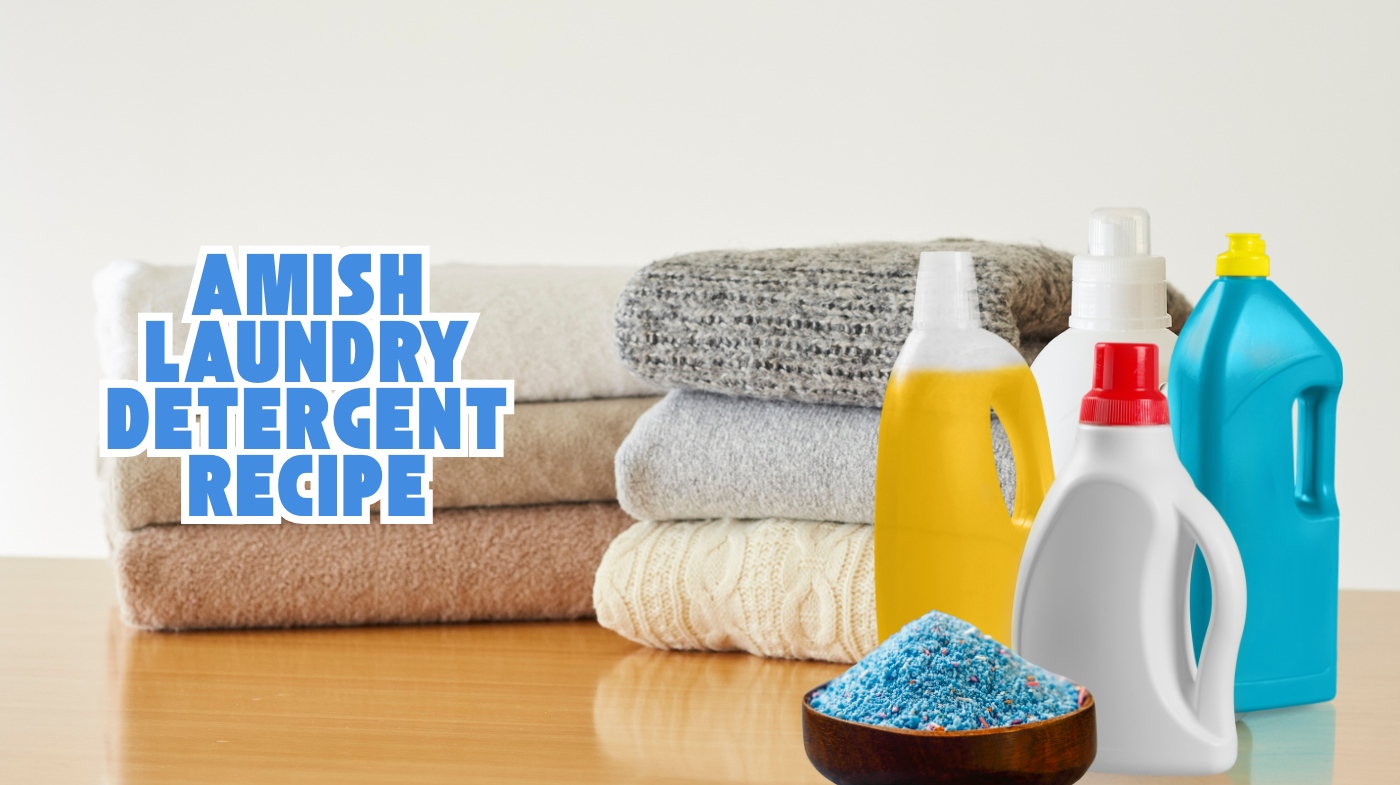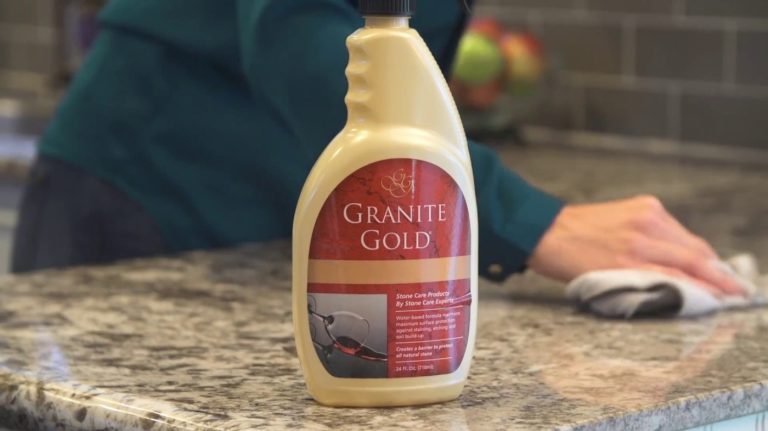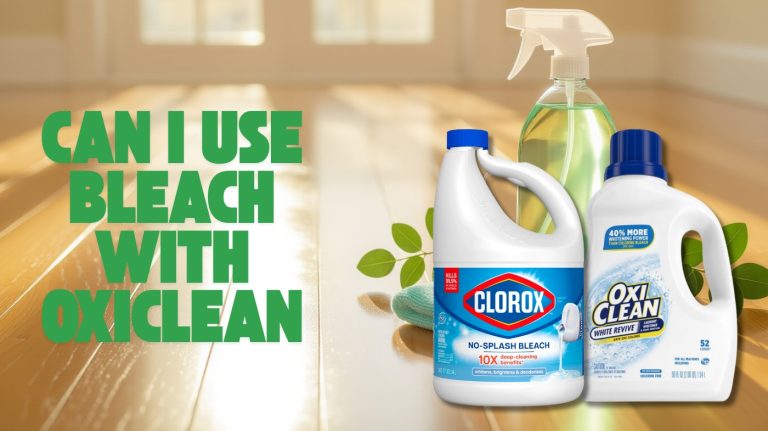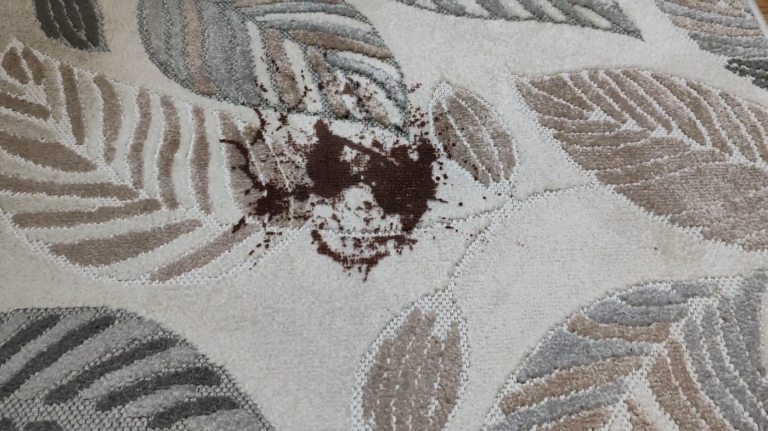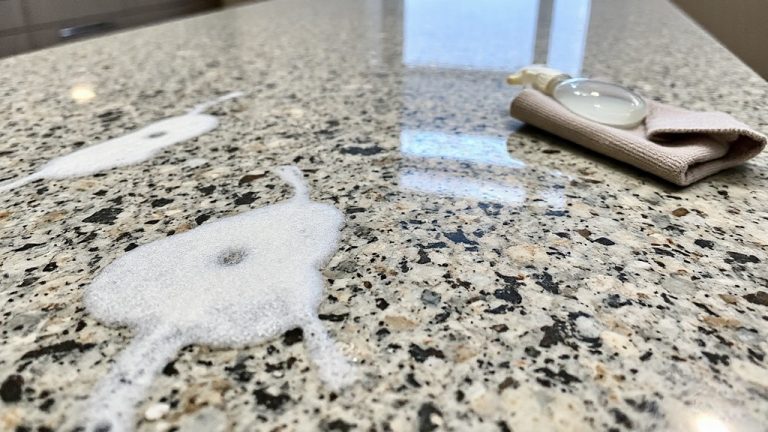Amish Laundry Detergent Recipe: Simple Steps, Big Results
You can make Amish laundry detergent using grated natural soap like Fels-Naptha, washing soda, borax, and sometimes animal fats such as lard.
Start by dissolving the soap in hot water, then mix with borax and washing soda, stirring until smooth. Let the mixture gel for about 24 hours before use.
Store it in a cool, dry place, and use half a cup per wash. These simple, affordable steps create an effective, traditional detergent, with tips and variations waiting to enhance your process.
Key Takeaways
- Amish laundry detergent uses simple ingredients like grated soap, washing soda, borax, and sometimes lard or animal grease for soap-making.
- To prepare, dissolve grated soap in hot water, mix with borax and washing soda, then let the mixture gel for 24 hours before use.
- Use ½ cup detergent for top-loading washers and ¼ cup for high-efficiency machines, adding vinegar during rinse to soften fabrics and reduce residue.
- Store detergent in airtight containers away from heat, moisture, and sunlight to maintain freshness and extend shelf life up to one year.
- Customize scent by adding essential oils like citronella or lilac, or omit fragrances for sensitive skin and natural cleaning.
Ingredients Needed for Amish Laundry Detergent
Although Amish laundry detergent recipes vary, you’ll find that the core ingredients focus on natural soap bases and effective cleaning agents.
Commonly, you’ll grate Fels-Naptha bar soap for easy dissolving, or substitute Ivory, Sunlight, or Castile soap.
Some recipes use soap flakes derived from grated bars, while authentic Amish versions might include lard or animal grease for traditional soap-making.
To boost cleaning power, washing soda and borax are essential—they remove stains and disinfect.
Baking soda softens water and deodorizes, and ammonia occasionally appears for tackling grease. Vinegar often serves as a natural fabric softener, though it’s generally added during rinsing, not mixed in.
Many homemade recipes emphasize simple, readily available ingredients like Sunlight bar soap, washing soda, and borax to create an effective and gentle detergent.
Measuring and Mixing Ratios
When you prepare Amish laundry detergent, careful measuring and mixing are essential to achieving the right consistency and cleaning power.
Start by dissolving 1/3 to 1 bar of grated soap in 3 to 4 cups of hot water, stirring constantly until smooth. Using Fels Naptha soap is recommended for better consistency and improved stain removal. Regular maintenance of your cleaning solutions helps preserve their effectiveness over time.
Careful measuring and mixing are key to making Amish laundry detergent with the right consistency and cleaning power.
In a larger bucket, combine 1/2 cup each of borax and washing soda with 2.5 to 4 cups hot water, stirring to dissolve.
Pour the soap mixture into this solution, then add enough hot water to fill the bucket about 90 to 95 percent full, roughly 15 cups total. Stir thoroughly to homogenize.
After setting covered for 24 hours, the detergent will gel, ready for use. Keeping these ratios ensures balanced cleaning and the traditional gel texture you expect.
Proper preparation and chemical compatibility contribute to optimal detergent performance.
Step-by-Step Preparation Instructions
Before you start the preparation, gather all your ingredients and equipment in a well-ventilated space to guarantee safety while handling lye and ammonia.
Begin by grating one Sunlight or Fels Naptha bar, dissolving it in a medium saucepan over low heat.
Separately, melt nine cups of lard until liquid. This homemade recipe calls for 9 cups of melted lard or any grease as the fat base.
Once both are ready, combine the melted soap and lard in a large pot or bucket. Add half a cup of ammonia, three tablespoons of borax, and optionally half a cup of citronella for fragrance.
Finally, sprinkle in one cup of Lewis lye carefully to initiate saponification. Stir frequently for 90 minutes, then hourly throughout the day.
Continue stirring the following day until the mixture crumbles. Let it cure for several days, stirring often, before transferring to airtight storage.
How to Use Homemade Amish Detergent?
After preparing your Amish laundry detergent and letting it cure properly, knowing how to use it effectively will guarantee the best cleaning results.
Proper use after curing ensures your Amish laundry detergent delivers optimal cleaning every time.
For top-loading washers, add about ½ cup of detergent directly to warm wash water before loading clothes. High-efficiency machines need less—around ¼ cup—since they use less water.
The detergent mixture should be fully liquefied before use to ensure easy pouring and proper distribution. It is important to test fabrics for compatibility with homemade detergents to prevent damage.
If your detergent gelled overnight, whisk it to liquefy before measuring. Adjust amounts based on soil level; heavily soiled laundry may require a bit more.
Using a funnel helps pour without spills. Consider adding a few drops of essential oils for a fresh scent.
During the rinse cycle, a splash of white vinegar softens fabrics naturally and reduces residue.
Stir or agitate mid-cycle for better cleaning. This traditional method ensures gentle, effective washing while preserving your fabrics.
Storage Tips for Best Results
To keep your Amish laundry detergent fresh and effective, store it in airtight containers like glass jars or food-grade plastic buckets.
Make sure you keep the detergent in a cool, consistent temperature away from moisture to prevent clumping and hardening. Avoid exposing the detergent to high humidity, which can promote mold growth.
Proper storage not only extends the shelf life but also helps maintain the detergent’s cleaning power for up to a year.
Using moisture absorbers or keeping the container in a dry place can further prevent clumping and moisture absorption.
Airtight Container Storage
When you store homemade Amish laundry detergent, choosing an airtight container is essential to keep your detergent fresh and effective.
Glass jars with tight-fitting lids offer an excellent seal, preventing moisture and air from degrading your detergent.
Heavy-duty plastic containers provide a lighter, durable option and often include handy measuring markings for accurate scooping.
Using natural ingredients in your detergent means it is gentle on skin, so proper storage helps maintain its skin-friendly qualities.
Repurposed commercial detergent bottles can work well if cleaned thoroughly and sealed properly, supporting sustainability.
Large buckets with secure lids suit bulk storage needs. Make sure your container has a reliable seal, like a rubber gasket, to stop clumping and preserve the detergent’s potency.
Storing your detergent in a low-humidity environment also helps prevent moisture buildup and extends its shelf life.
Store containers away from direct sunlight in a cool, dry spot. Label your containers to track freshness and always use dedicated scoops to avoid contamination and keep your detergent effective.
Temperature and Shelf Life
Choosing the right container keeps your homemade detergent fresh, but temperature plays a big role in how well it withstands over time.
Store your detergent in a cool, dry place away from direct sunlight. Avoid freezing or excessive heat, which can cause separation or spoilage.
Powdered detergents last longer than liquid or gel forms due to low moisture. If you notice thickening or separation in liquid detergent, just stir it before use.
Always inspect for odor or mold to guarantee freshness. Additionally, storing detergent properly can help maintain its effectiveness, similar to how Amish soaps are aged to improve performance and reduce waste, showcasing the importance of proper storage techniques.
| Storage Condition | Effect on Detergent | Recommended Action |
|---|---|---|
| Cool, dry, room temp | Maintains freshness | Ideal for all forms |
| Excessive heat | Causes separation, spoilage | Avoid |
| Freezing | Alters texture, performance | Do not freeze |
| Moisture exposure | Reduces shelf life | Store dry |
| Direct sunlight | Fades, degrades detergent | Keep container shaded |
Cost Efficiency and Ingredient Sourcing
You’ll find that choosing affordable ingredients like bar soap, washing soda, and borax guarantees costs low without sacrificing quality.
Buying these in bulk not only reduces your expense per batch but also ensures you have enough on hand for regular detergent making. This method aligns with cost efficiency principles seen in other household maintenance routines.
Affordable Ingredient Options
Although sourcing quality ingredients might seem intimidating, you can keep costs low by selecting affordable options and shopping smartly.
For instance, baking soda costs less than a dollar per pound, making it an economical base. Soap bars like Fels-Naptha or Ivory are under a dollar each and work well in your detergent.
Washing soda and borax, available at major retailers, add cleaning power without breaking the bank. You might also swap Epsom salt for sea salt to save a bit more. Using just one tablespoon per load cuts your costs nearly in half, averaging around 12 cents per wash.
Choosing store-brand ingredients and shopping at discount stores further stretches your budget.
Bulk Buying Benefits
When you buy ingredients in bulk for your Amish laundry detergent, you open significant cost savings and guarantee a steady supply of quality components.
Bulk purchases often come with discounts up to 27%, lowering your cost per load and protecting you from inflation by locking in prices.
You’ll also reduce frequent reordering and shipping fees, saving both time and money. Sourcing ingredients in large quantities assures consistent detergent quality, preventing fabric damage and maintaining cleaning effectiveness. Reputable suppliers ensure consistent quality assurance that meets your high standards.
Plus, bulk buying allows access to specialty or eco-friendly components often unavailable in small amounts. It is important to avoid harsh chemicals like bleach in your detergent to prevent corrosion and discoloration of fabrics.
Variations and Alternative Ingredients
Since homemade Amish laundry detergent recipes vary widely, you’ll find plenty of room to customize ingredients based on availability and personal preference.
You might use Borax combined with washing soda and grated Fels Naptha soap, or substitute Borax with washing soda or baking soda to suit your needs. It is important to consider the chemical compatibility of ingredients when mixing detergents to ensure effectiveness and safety.
Some recipes skip Borax entirely, relying on lye or baking soda for cleaning power.
You can choose between powder and liquid forms—powders mix grated soap flakes, washing soda, baking soda, and Borax, while liquids dissolve soap and Borax before blending.
Borax is effective in homemade laundry detergents, both in powder and liquid forms, and is incorporated into recipes shared by users for various household tasks household cleaning.
For fats, traditional lard or household grease can replace soap fats, adding authenticity. You may also add essential oils like citronella or lilac for fragrance, or leave your detergent unscented for sensitive skin.
Frequently Asked Questions
Can Amish Laundry Detergent Be Used for Baby Clothes Safely?
You can safely use Amish laundry detergent for baby clothes if you follow proper dilution and rinsing steps. These detergents use gentle, plant-based ingredients that avoid harsh chemicals and synthetic fragrances, reducing irritation risks for your baby’s sensitive skin.
Just be cautious with components like borax and washing soda, ensuring they’re well diluted. With careful use, this natural option cleans effectively while protecting your infant’s delicate skin and health.
How Long Does Homemade Amish Detergent Last Before Expiring?
You’ll find that homemade laundry detergent usually stays effective for about two months when stored properly. If you keep it dry, sealed, and away from humidity, it might last several months, but its cleaning power could decline.
Powdered forms with borax or OxiClean last longer—up to a year. Watch for clumping, changes in smell, or reduced lathering as signs it’s time to make a fresh batch.
Is Amish Laundry Detergent Effective on Tough Stains Like Grease?
You might think nothing can break down grease like a thunderstorm, but Amish laundry detergent comes close. Its alkaline lye base and animal fats work together to dissolve tough grease stains effectively.
While it may not blast through every spot as quickly as chemical detergents, it handles greasy farm or mechanical grime surprisingly well. Pair it with natural boosters like baking soda or sunshine for even better stain-fighting power.
Can This Detergent Be Used in Septic Tank Systems Safely?
You can safely use this detergent in septic tank systems because it avoids harsh chemicals like phosphates and fillers that harm beneficial bacteria. Its natural, biodegradable ingredients won’t disrupt the septic process or soil filtration.
Just remember to use it in recommended amounts to prevent soap buildup. By choosing gentle, septic-friendly detergents, you help maintain the essential bacterial balance that keeps your septic system working efficiently and prevents costly damage.
Does Amish Detergent Cause Fabric Fading or Damage Over Time?
Think of your clothes as delicate flowers—using harsh soap can wilt their colors. Homemade detergents, with alkaline ingredients like borax and washing soda, can gradually fade fabric dyes if you’re not careful with dosing.
Over time, these soaps might also leave residues that stiffen fibers and weaken fabric integrity. So, while they clean, you’ll want to use them cautiously to keep your clothes vibrant and lasting longer.
Experience the Amish Secret to Fresh, Affordable Laundry
By making your own Amish laundry detergent, you’re tapping into a tradition that’s both simple and effective. Did you know that homemade detergents can save you up to 75% compared to store-bought brands?
Not only will you save money, but you’ll also control the ingredients you use, ensuring a gentle clean for your clothes.
With just a few basic supplies and easy steps, you’re set to enjoy fresh, clean laundry the Amish way.

